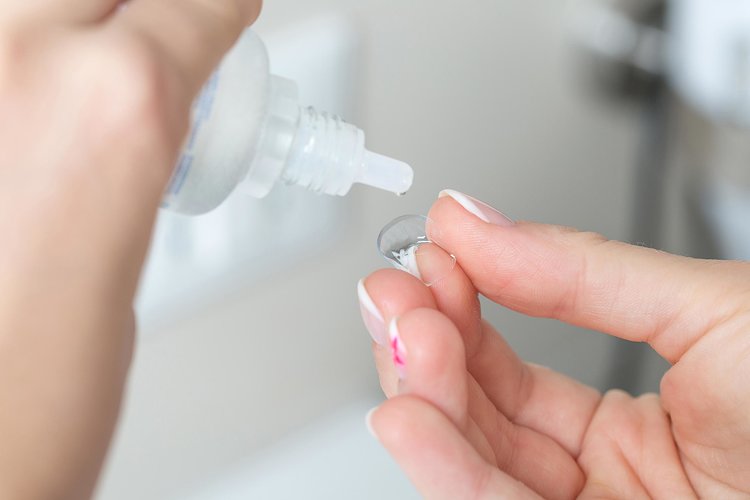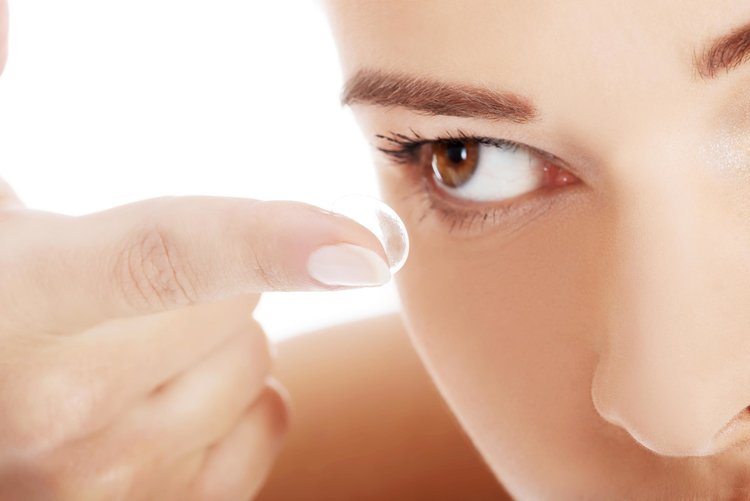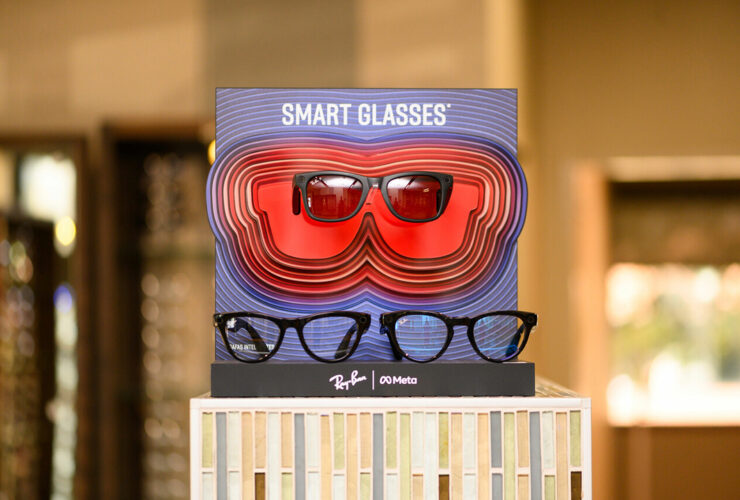At ilumin, we feel incredibly lucky to be working in the field of Ophthalmology at a time when our research can be used to fine-tune the advancements our predecessors made before us! Take for instance, the delicate and intricate design of the contact lens.
While as early as 1508, DaVinci had visions of what would eventually become our modern-day contact lens, a suitable prototype would not be applied to an eye for another 300 years. Early options included applying a water-filled apparatus directly to the eye, while more effective options left users unable to blink. Eventually the first wearable lens was introduced in 1888. It was an uncomfortable blown glass lens, affixed to the eye with the aid of wax.
The science behind the contact lens has advanced exponentially in the last 130 years, and there is no telling the number of people you encounter every day who utilize the invisible aid. While contact lenses have made life simpler and more convenient for millions of Americans, there are still steps that need to be taken for proper contact care!
The first step to a healthy relationship with your lenses is determining the right lens for you. It’s important to have a conversation with your doctor and optician about your specific needs, but let’s talk a little about each type of lens, who might be best suited to each, and what kind of maintenance and upkeep you can expect!
See Here…

No matter what type of contact you and your doctor decide on, there are a few steps that are universal.
- Remove contacts before swimming. There are a number of forums online saying it’s perfectly safe to swim in contacts, but please avoid it at all costs. From bacterial infections to parasites, and a condition called Acanthamoeba keratitis, your eyes are far too precious to risk, and that is exactly what you are risking.
- You’d better lick this bad habit! Nearly a million people per year experience eye infections linked to licking contacts, and returning them to the eye. People do this for a number of reasons including dry eyes and dropped contacts. Believe in or not, your spit is not clean enough to sanitize your lens! Don’t spit in your eye. You’re too good for that!
- Use an approved cleaner, not water (especially well water as it contain a parasite called Acanthamoeba, which causes severe, very painful, infections), not “whatever is in my friend’s medicine cabinet”. Your lens has been in development for 300 years. A lot of people learned the hard way how not to take care of their contacts, and essentially, their eyes. Science learned from them, let science keep your eyes safe!
- Use fresh solution every time, disposing of leftover solution daily.
- Talk with your doctor before starting any medication at all, including holistic treatments, vitamins, and weight loss supplements.
- Apply makeup before inserting your lenses, and remove your lenses before removing your makeup. Using clean brushes, pencils, and applicators is always important, but becomes absolutely imperative when any bacteria your eye is exposed to becomes trapped behind your contact!
- Wash hands before application. Every. Time.
Suiting Up Your Sight

If anyone ever told you your eyes made you special, they only knew the half of it. The size, shape, and prescription needs of each person’s pair means you’ll need to be fitted for your lenses, and you may need to test drive a set or two before you find the right fit! Find the right rx, style, size, and shape with your doctor and optician. Let’s take a look at a few lens options.
Daily Wear
Daily wear lenses are to be removed before sleep, and can be cleaned and used up to two weeks (follow directions carefully). These are not to be confused with daily disposables, which are to be thrown out daily. However, severe infections can still develop from overwearing Daily lenses.
One of the few drawbacks to using daily wear or daily disposable lenses is the lack of access to local recycling. Waste adds up quickly, but Bausch and Loam has a simple solution! Visit https://www.terracycle.com/en-US/brigades/bauschrecycles/ and print a label to send your used lenses to one of the many centers designed to handle the unique challenge of recycling lenses.
Extended Wear
Extended wear lenses are safe and comfortable for long term use, and even approved for overnight use! Listen closely to your eyes, however. Just because they’re approved for sleeping in doesn’t mean you’ll be comfortable all night, and they still need to be removed at least once a week for cleaning. If your eyes become dry or itchy, remove lenses and use lubricating eye drops. In addition, watch out for severe infections that can develop from overwear.
Rigid Gas Permeable
You may know them as Gas Permeable, Rigid Gas Permeable, or Oxygen Permeable Lenses. While they are rigid, they should not be confused with the now-obsolete old-fashioned hard lenses, which were made of poly methyl methacrylate. The most notable difference between RGP lenses and their PMMA predecessor is that the hard lenses were not gas permeable. Your eyes need significant exposure to oxygen, and this meant that the lenses had to be made small enough to allow tears to wash under the lens with each blink. This made the lens very obvious and uncomfortable for wearers.
RGP lenses come with a period of adaptation, which means a little breaking-in is needed before they become as comfortable as soft lenses. Not for the lens itself, but for your eyelid, which will need to soften a bit to accommodate the lense. For those who are patient the benefits are usually worth the wait! RGP lenses provide sharper, clearer sight for the most discernible user and for those who need near-perfect vision for their work.
Additionally, some lens wearers are unable to wear soft lenses. Some conditions that preclude users from soft lenses include:
- Shape – While your eyes may be your most fetching feature, the shape of your actual eyeball might set you apart more than you realize. Some eye shapes are not compatible with a soft lens. In many cases, a cone-shaped eye leads to vision trouble, and a hard lens is utilized therapeutically.
- RX Type – There’s no such thing as having “bad” eyes, but there are conditions that preclude a wearer from a soft lens including some astigmatism and presbyopia. Particularly strong prescriptions may also require RGP lenses.
- Certain Eye Conditions – Hard lenses are more oxygen permeable, and unlike soft lenses, are not made of water. This makes them healthier for long-term use, particularly for those with certain dry-eye syndromes and sensitivities.
- Post-op – Certain surgeries require a hard lens post-op, while some reshaping surgeries require the lens to help hold the shape of the eye.
MultiFocal
Patients requiring compound corrective lenses, bifocals, trifocals and multifocal lenses historically had few options other than a dignified, if not particularly attractive pair of lined glasses. Now, progressive and multifocal lenses are safe and effective for long term use!
Hybrid
Hybrid lenses are comprised of a gas permeable center surrounded by a soft lens. These can safely correct nearsightedness, farsightedness, astigmatism, keratoconus (curved cornea), and age-related vision impairment.
Is it a Problem?
Always remove your lenses and reach out to your vision specialists ASAP if you experience any of the following:
- Blurry Vision
- Eye Pain
- Discharge
- Swelling of the Eye
- Sensitivity to Light
Mild itching, dryness, or sensitivity is likely nothing to worry about, and you should simply remove your lenses and use approved lubricating eye drops. If the condition persists or worsens, contact your provider.
No matter what lenses you choose, excellent communication with your vision team is imperative to keeping your eyes healthy for a lifetime of breathtaking sights!






